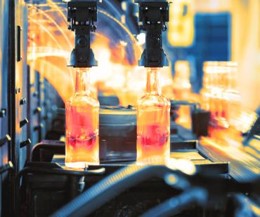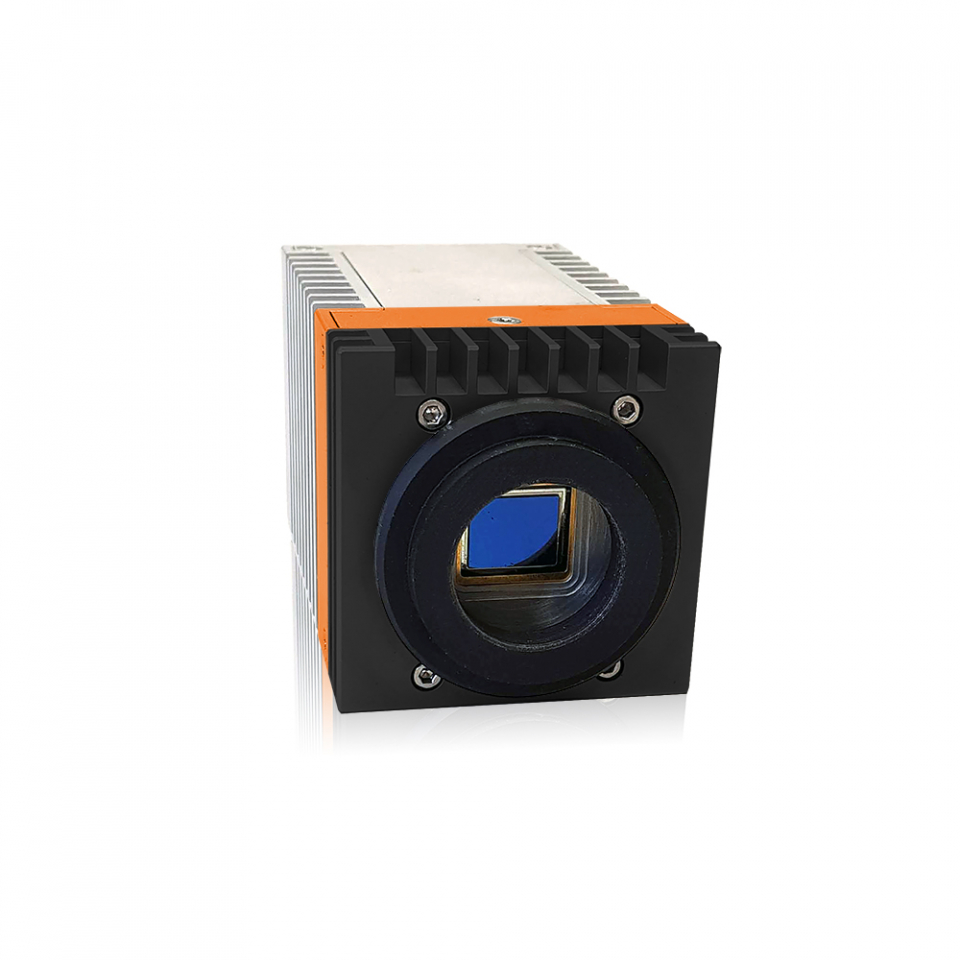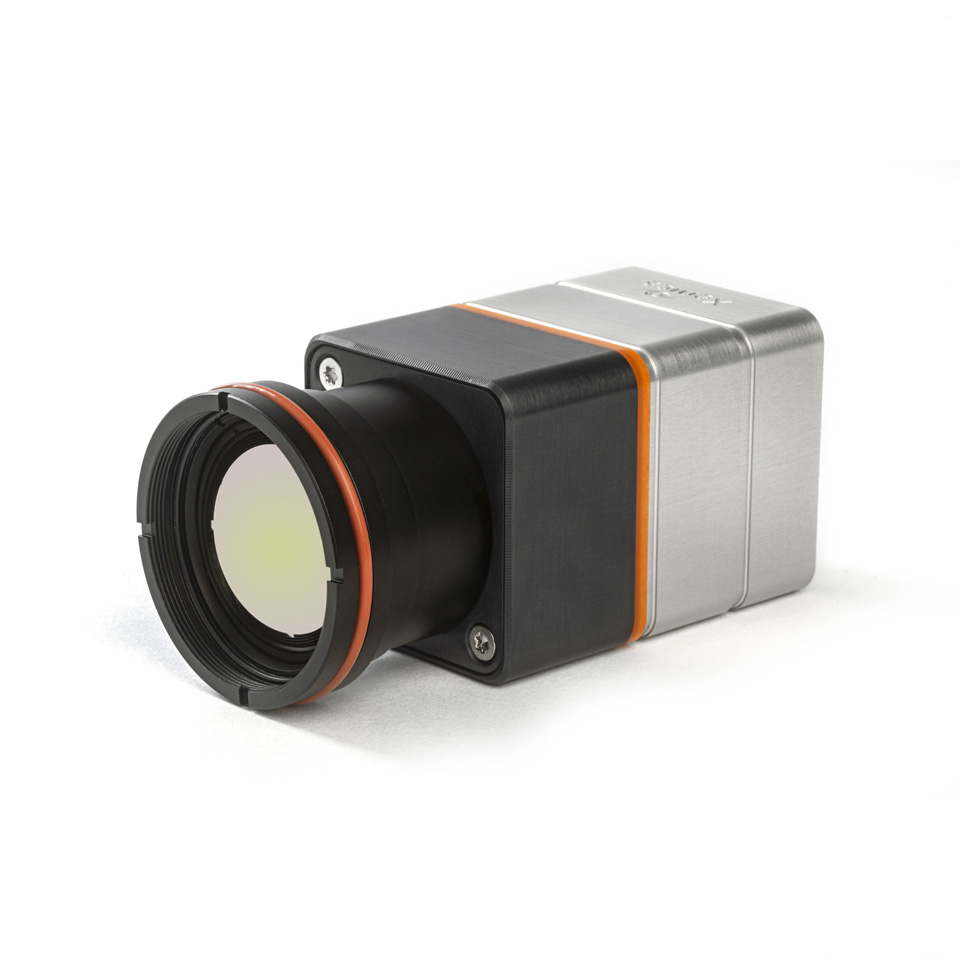Industrial Inspection Using Infrared Cameras
Infrared cameras can be used to inspect products based on the absorption of the light or the emission of the light. One application for emission is the use of Short Wave Infrared (SWIR) Cameras to monitor temperature in hot glass bottles as they come off the manufacturing line. While Long Wave Infrared (LWIR) cameras can also monitor the temperature, they are unable to see through the bottle to see internal structure and the far glass wall as the SWIR camera can.

Another application for SWIR Cameras is monitoring the fill level of bottles during manufacturing. By choosing the appropriate wavelength in the SWIR for imaging, the water appears black against the clear or colored container background so fill levels are easily verified. This is especially useful when the liquid in the bottle is clear and the bottle is glass or even colored.
The best camera for these applications would have a full 640×512 sensor for a good field of view. They also need to run at high speed for fast inspection times and perhaps have gain settings that are selectable to optimize for the lighting conditions used.
The Wildcat 640 Series has the following features:
- VGA Resolution Sensor for good field of view, up to 200 FPS
- Lower noise for higher sensitivity and high dynamic range for varying signal sizes
- USB3 connectivity for plug and play operation.
- Wildcat 640 Series Datasheet
- Product information/quote
Another Industrial Inspection process is the use of thermal emissions to detect overheating of electronic parts on a printed circuit board. If an electronic component draws too much power due to an improper component, the intensity of the thermal signal will help identify circuit boards that are prone to failure. This overheating can be monitored with a good Thermal Camera. In the testing of electrical motors or other powered equipment, a Thermal Camera can be used to look for the appropriate amount of thermal emission. Using an imaging approach provides high spatial resolution, accurate measurements when using onboard calibration and traceability using the recorded image files.

For this kind of inspection work, the ideal solution would be a Thermal Camera with VGA resolution, the ability to get accurate temperature values through calibration, a good thermal discrimination due to its low Noise Equivalent Temperature Difference (NETD) value and a compact size with GigE connectivity for easy setup and use where needed in the inspection process.
The Ceres T 640 Series has the following features:
- VGA Format (640×480) for a good field of view
- Factory based Calibration over two Temperature Ranges
- Good NETD < 60mK for discrimination of temperature differences
- Compact Size, GigE Connectivity for ease of use
- Ceres T 640 Series Datasheet
- Product information/quote

